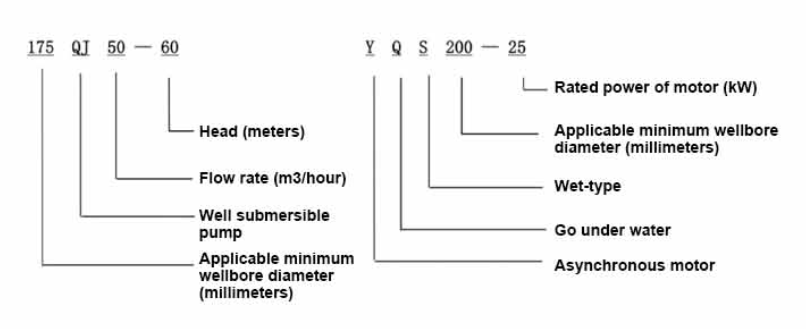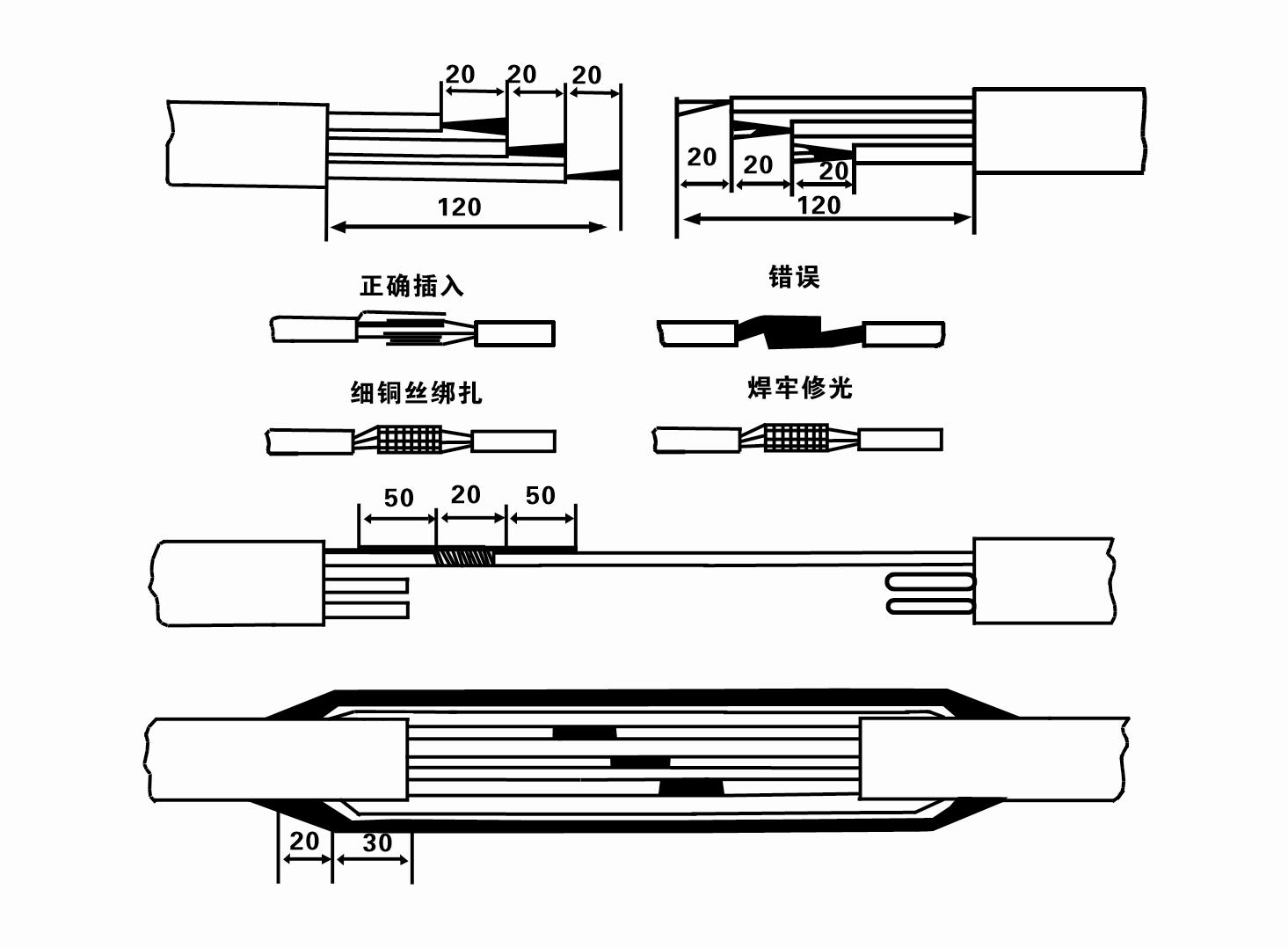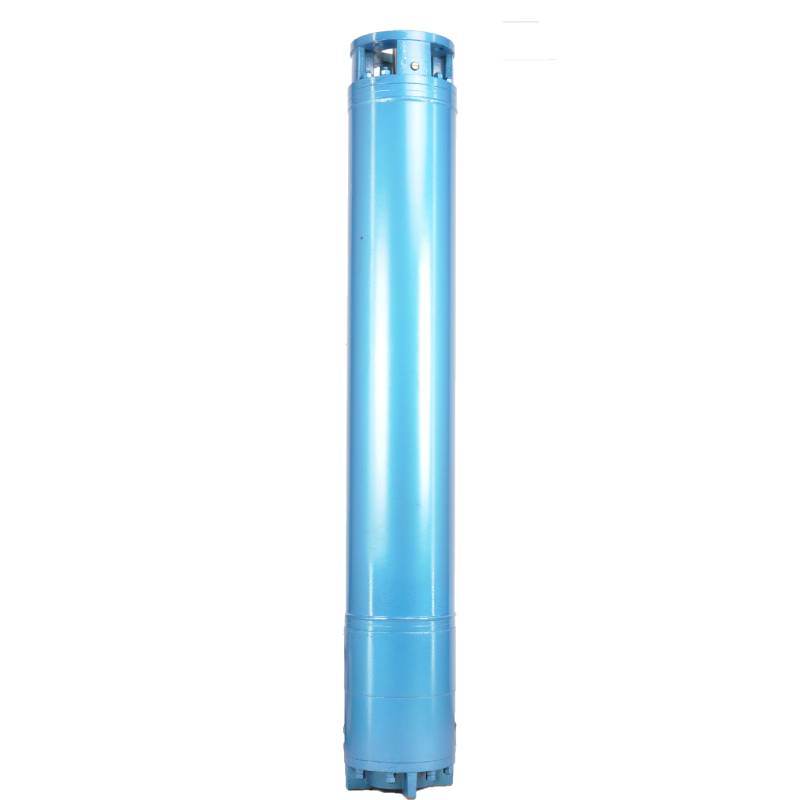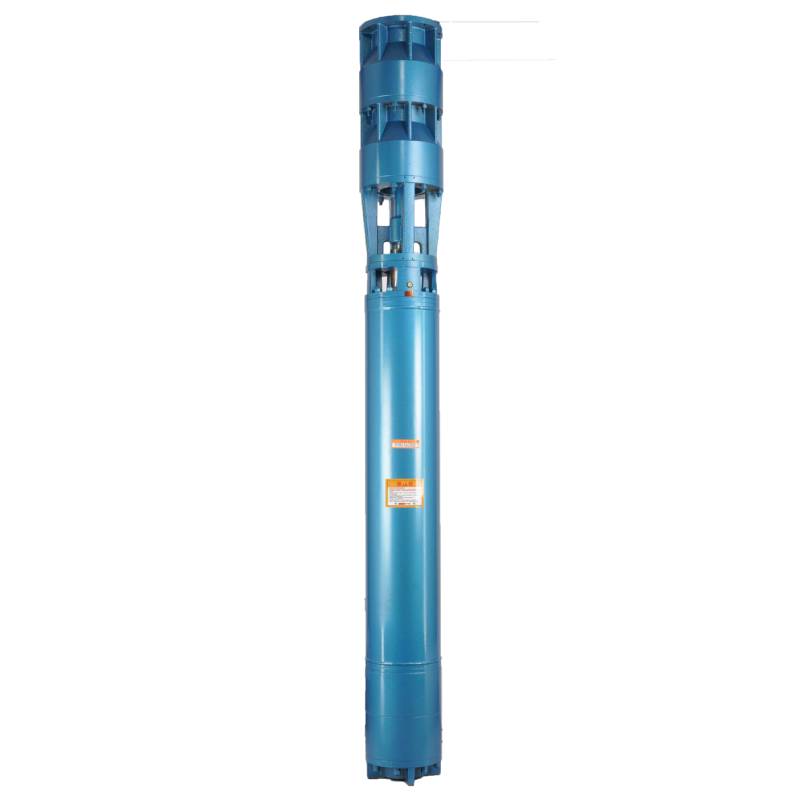This hot water pump adopts the motor made of 50W400 grade high quality cold rolled silicon steel, which is stamped by high speed punch press. It has the advantages of low stator iron loss and low self-heating. The motor winding is designed for hot water pump, high temperature resistance and anti-aging. The winding has water resistance, and adopts 3CR13 stainless steel blade shaft, high temperature resistant bushing and other high quality accessories to enable it to operate for a long time at high temperature, and can be used with frequency converter, so as to automatically adjust according to the amount of water used. This hot water pump is the ideal choice for your hot water equipment, which can operate stably and efficiently, providing you with a lasting hot water supply.
The product is a three-phase AC 380V (tolerance + / - 5%), 50HZ (tolerance + / - 1%) power supply submersible pump. With water quality requirements: water temperature is not higher than 20 °C; solid impurities content (mass ratio) is not more than 0.01%; PH value (pH) is 6.5-8.5; hydrogen sulfide content is not more than 1.5mg/L; chloride ion content is not more than 400mg/L. The electric pump adopts closed or water sealed wet structure, before use must be submersible motor inner cavity filled with clean water to prevent empty, and then tighten the water and air bolts, otherwise not to use. Its work should be completely immersed in water, immersion depth is not more than 70 meters, the distance between the bottom of the pump and the bottom of the well is not less than 3 meters. Well water inflow quantity should be able to meet the electric pump water output and continuous operation, the output water quantity should be controlled at 0.7-1.2 times of the rated flow. The well should be vertical, the electric pump can not be used horizontally or inclined, only vertically placed. The electric pump must be equipped with cables and external overload protection device as required. It is strictly prohibited to conduct no-load test under no water condition.

| Modello | Portata (m3/h) | Testa (M) |
Velocità di rotazione (cambiamento/punto) |
Pompa dell'acqua(%) | Presa diametro (mm) |
Applicabile bene diametro (millimetro) |
Valutato power(KW) |
Valutato tensione(V) |
Valutato corrente(A) |
Efficienza motoria (%) | power factorcosφ | Unità Dimensione massima radiale (mm) |
Osservazione | |||||||||
| 300QJ200-40 | 200 | 40 | 2900 | 76 | 150 | 300Sopra | 37 | 380 | 77.8 | 85.0 | 0.85 | 281 | ||||||||||
| 300QJ200-60 | 60 | 55 | 115 | 85.5 | 0.85 | |||||||||||||||||
| 300QJ200-80 | 80 | 75 | 154.1 | 86.0 | 0.86 | |||||||||||||||||
| 300QJ200-100 | 100 | 90 | 183.8 | 86.5 | 0.86 | |||||||||||||||||
| 300QJ200-120 | 120 | 100 | 204.3 | 86.5 | 0.86 | |||||||||||||||||
| 300QJ200-140 | 140 | 125 | 249.5 | 87.5 | 0.87 | |||||||||||||||||
| 300QJ200-160 | 160 | 140 | 277.8 | 88.0 | 0.87 | |||||||||||||||||
| 300QJ200-180 | 180 | 160 | 317.5 | 88.0 | 0.87 | |||||||||||||||||
| 300QJ200-200 | 200 | 185 | 367.2 | 88.0 | 0.87 | |||||||||||||||||
| 300QJ200-240 | 240 | 220 | 436.6 | 88.0 | 0.87 | |||||||||||||||||
| 300QJ320-30 | 320 | 30 | 2900 | 77 | 200 | 300Sopra | 45 | 380 | 94.6 | 85.0 | 0.85 | 281 | ||||||||||
| 300QJ320-60 | 60 | 90 | 183.8 | 86.5 | 0.86 | |||||||||||||||||
| 300QJ320-90 | 90 | 125 | 249.5 | 87.5 | 0.87 | |||||||||||||||||
| 300QJ320-120 | 120 | 160 | 317.5 | 88.0 | 0.87 | |||||||||||||||||
1, well submersible pump for clean water pump, prohibit the new well, pumping sediment and muddy water,
2, well water pump voltage grade of 380/50HZ, the use of other voltage grades of submersible motors need to be customized. The underground cable must use waterproof cable, must be equipped with starting equipment, such as distribution box, start not ready should have commonly used motor comprehensive protection function, such as short circuit overload protection, phase protection, undervoltage protection, grounding protection, idling protection, in case of abnormal conditions, the protection device should be timely action trip.
3, the installation and use of the pump must be reliably grounded, prohibit the push and pull switch when the hands and feet are wet, the installation and maintenance of the pump must be cut off the power supply, the use of the pump place to set up "to prevent electric shock" obvious signs:
4, down the well or before installation, the motor cavity must be filled with distilled water or non-corrosive clean cold boiling water, tighten the / water bolt, the pump on the ground test run, must be to the pump chamber water lubrication rubber bearings, instant start not more than a second, see whether the steering is the same as the steering instructions. When the pump is upright, pay attention to safety, prevent overturning injury.
5, rigorosamente secondo le disposizioni dell'ascensore della pompa, del campo di utilizzo del flusso, per evitare che la forza di pompaggio a basso flusso o ad alto sollevamento, il cuscinetto reggispinta e altre parti soggette a usura, il sovraccarico del motore brucino
6, dopo aver pompato il pozzo, la misurazione della resistenza di isolamento del motore rispetto a terra non deve essere inferiore a 100 M, dopo l'inizio osservare la tensione e la corrente, controllare l'isolamento dell'avvolgimento del motore, se in linea con i requisiti; La temperatura del luogo di conservazione della pompa, se inferiore al punto di congelamento, deve essere asciutta l'acqua nella cavità del motore, per evitare danni causati dal ghiaccio d'acqua della cavità del motore causati dalla bassa temperatura.
The pump part is mainly composed of pump shaft, impeller, shunt shell, rubber bearing, check valve body (optional) and other components. The motor part is mainly composed of base, pressure regulating diaphragm, thrust bearing, thrust plate, lower guide bearing seat, stator, rotor, upper guide bearing seat, sand discharging ring, water inlet section, lead cable and other components. The main characteristic of this product is that the motor is a water-cooled submersible three-phase asynchronous motor, and the motor cavity is filled with water to cool the motor and lubricate the bearing. The pressure regulating diaphragm at the bottom is used to adjust the expansion-contraction pressure difference in the body caused by the change of the temperature rise of the motor. In order to prevent the sand particles in the well water from entering the motor, two oil seals are installed at the upper end of the motor shaft extension, and a sand discharging ring is installed to form a sand discharging structure. In order to prevent the pump shaft from jumping when starting, the pump shaft and the motor shaft are connected together through a coupling, and a thrust bearing is installed at the bottom of the motor. The lubrication of the motor and the pump bearing is realized through water lubrication. The stator winding of the motor is made of high-quality well motor winding wire, with high insulation performance. The pump is designed by computer CAD, with simple structure and good technical performance.

(1)Preparazione prima dell'installazione:
1. Controllare se la pompa sommersa soddisfa le condizioni di utilizzo e l'ambito specificato nel manuale.
2. Utilizzando un oggetto pesante con un diametro pari al diametro esterno massimo della pompa sommergibile, misurare se il diametro interno del pozzo può adattarsi alla pompa sommergibile e misurare se la profondità del pozzo soddisfa i requisiti di installazione.
3. Controllare se il pozzo è pulito e se l'acqua del pozzo è torbida. Non utilizzare mai un'elettropompa sommergibile per lavare la pompa welor dal fango e dall'acqua della sabbia per evitare danni prematuri all'elettropompa sommergibile.
4. Controllare se la posizione del morsetto di installazione della testa pozzo è adatta e se può sopportare la qualità dell'intera unità
5. Controllare se i componenti della pompa sommersa sono completi e installati correttamente secondo lo schema di montaggio nel manuale Rimuovere lo schermo del filtro e ruotare il giunto per vedere se ruota in modo flessibile
6. Svitare la vite dell'acqua e riempire la cavità del motore con acqua pulita e non corrosiva (nota: assicurarsi di riempirla), quindi serrare la vite dell'acqua. Dopo 12 ore di iniezione d'acqua, la resistenza di isolamento del motore non deve essere inferiore a 150 MQ se misurata con una tavola vibrante da 500 V.
7. Cable joint, cut off a 120mm rubber sleeve from one end of the outgoing cable and the matching cable with an electrician's knifethen stagger the length of the three core wires in a stepped shape, peel off a 20mm copper core, scrape of the oxide layer on theoutside of the copper wire with a knife or sand cloth, and insert the two connected wire ends in palirs.After tying the layer tightly with fine copper wire, solder it thoroughly and firmly, and sand of any. burrs on the surface. Then, forthe three joints, use polyvester insulation tape to wrap them in a semi stacked manner for three lavers. Wrap the two ends of thewrapping layer tightywith nyion thread,and then use a semi stacked method to wrap the tape for three layers. Wrap the outellayer with high-pressure insulation tape for three layers. Finally, fold the threestrands together and repeatedly wrap them for fivelayers with high-pressure tape. Each layer must be tightly tied, and the interlayer joints must be tight and fimm to prevent water frompenetrating and damaging the insulation, After wrapping, soak in water at room temperature of 20 ’c for 12 hours, and measurethe insulation resistance with a shaking table, which should not be less than 100M Ω
Lo schema del processo di cablaggio del cavo allegato è il seguente:
8. Utilizzare un multimetro per verificare se i cavi trifase sono collegati e se la resistenza CC è approssimativamente bilanciata.
9. Controllare se il circuito e la capacità del trasformatore sono sovraccarichi, quindi collegare l'interruttore di protezione da sovraccarico o l'apparecchiatura di avviamento. Vedere la Tabella 2 per i modelli specifici, quindi versare un secchio d'acqua nella pompa dell'acqua dall'uscita della pompa dell'acqua per lubrificare i cuscinetti di gomma nella pompa, quindi posizionare l'elettropompa sommergibile in posizione verticale e stabile. Avvio (non più di un secondo) e controllare se la direzione dello sterzo è coerente con il segnale dello sterzo. In caso contrario, scambia due connettori qualsiasi del cavo trifase. Quindi installa il filtro e preparati a scendere nel pozzo. Se utilizzata in occasioni particolari (come fossi, fossi, fiumi, stagni, stagni, ecc.), l'elettropompa deve essere collegata a terra in modo affidabile.
(2)Attrezzature e strumenti di installazione:
1. Una coppia di catene di sollevamento per più di due tonnellate.
2. Un treppiede con altezza verticale non inferiore a quattro metri.
3. Due funi sospese (funi metalliche) che possono sopportare un peso superiore a una tonnellata (possono sopportare il peso di un set completo di pompe dell'acqua).
4. Installare due paia di morsetti (stecche).
5. Chiavi inglesi, martelli, cacciaviti, utensili e strumenti elettrici, ecc.
(3)Installazione dell'elettropompa:
1. Lo schema di installazione dell'elettropompa sommergibile è mostrato nella Figura 2. Le dimensioni specifiche di installazione sono riportate nella Tabella 3 "Elenco dimensioni di installazione dell'elettropompa sommersa".
2. Le elettropompe sommergibili con una prevalenza inferiore a 30 metri possono essere issate direttamente nel pozzo utilizzando tubi flessibili e funi metalliche o altre funi di canapa in grado di sopportare l'intero peso dell'intera macchina, dei tubi dell'acqua e dell'acqua nei tubi.
3. Le pompe con una prevalenza superiore a 30 metri utilizzano tubi in acciaio e la sequenza di installazione è la seguente:
①Utilizzare un morsetto per bloccare l'estremità superiore della parte della pompa dell'acqua (il motore e la pompa dell'acqua sono stati collegati in questo momento), sollevarla con una catena sospesa e legarla lentamente nel pozzo finché non posizionare il morsetto sulla testa del pozzo e rimuovere il catena sospesa.
② Utilizzare un altro paio di fascette per serrare un tubo, sollevarlo con una catena sospesa a 15 cm di distanza dalla flangia e abbassarlo lentamente. Tra la flangia del tubo e la flangia della pompaMettere il cuscinetto in gomma in posizione e serrare il tubo e la pompa in modo uniforme con bulloni, dadi e rondelle elastiche.
③ Sollevare leggermente la pompa sommergibile, rimuovere il morsetto sull'estremità superiore della pompa dell'acqua, legare saldamente il cavo al tubo dell'acqua con un nastro di plastica e legarlo lentamente finché il morsetto non viene posizionato sulla testa del pozzo.
④Utilizzare lo stesso metodo per collegare tutti i tubi dell'acqua al pozzo.
⑤Dopo aver collegato il cavo di uscita all'interruttore di controllo, è collegato all'alimentazione trifase.
(4) Cose da notare durante l'installazione:
1. Se si riscontra un fenomeno di inceppamento durante il processo di pompaggio, girare o tirare il tubo dell'acqua per superare il punto di inceppamento. Se vari accorgimenti continuano a non funzionare, non forzare la pompa per evitare danni all'elettropompa sommergibile e al pozzo.
2. Durante l'installazione, posizionare un tampone di gomma sulla flangia di ciascun tubo e serrarlo uniformemente.
3. Quando la pompa dell'acqua viene abbassata nel pozzo, deve essere posizionata al centro del tubo del pozzo per evitare che la pompa funzioni a lungo contro la parete del pozzo, provocando vibrazioni della pompa e spazzamento e bruciatura del motore .
4. Determinare la profondità della pompa dell'acqua sul fondo del pozzo in base alle condizioni di scorrimento della sabbia e del limo nel pozzo. Non seppellire la pompa nel fango. La distanza dalla pompa dell'acqua al fondo del pozzo non è generalmente inferiore a 3 metri (vedi Figura 2).
5. La profondità di ingresso dell'acqua della pompa dell'acqua non deve essere inferiore a 1-1,5 metri dal livello dinamico dell'acqua al nodo di ingresso dell'acqua (vedere Figura 2). In caso contrario, i cuscinetti della pompa dell'acqua potrebbero danneggiarsi facilmente.
6. L'alzata della pompa dell'acqua non può essere troppo bassa. Altrimenti, è necessario installare una valvola a saracinesca sulla tubazione dell'acqua della testa del pozzo per controllare il flusso della pompa al punto di flusso nominale per evitare che il motore venga sovraccaricato e bruciato a causa delle grandi portate.
7. Quando la pompa dell'acqua è in funzione, l'uscita dell'acqua dovrebbe essere continua e uniforme, la corrente dovrebbe essere stabile (nelle condizioni di lavoro nominali, generalmente non più del 10% della corrente nominale) e non dovrebbero esserci vibrazioni o rumore. Se si riscontra qualche anomalia, è necessario arrestare la macchina per scoprirne la causa ed eliminarla.
8. Durante l'installazione, prestare attenzione all'impostazione del filo di terra del motore (vedere Figura 2). Quando la tubazione dell'acqua è di acciaio, farla uscire dal morsetto di testa pozzo; quando il tubo dell'acqua è di plastica, collegarlo al punto di messa a terra dell'elettropompa.
After installation of the underwater pump, it is necessary to recheck the insulation resistance and three-phase continuity of the switch, and check whether the connection between the instrument and the starting equipment is wrong. If there is no problem, you can start the test machine. After starting, observe whether the indication reading of each instrument is correct. If the rated voltage and current specified on the nameplate are exceeded, observe whether the pump has any noise or vibration. If everything is normal, it can be put into operation. Four hours after the first operation of the pump, it should be turned off and the thermal insulation resistance of the motor should be quickly tested, and its value should not be less than 0.5 megaohm. After stopping the pump, it should be restarted after an interval of five minutes to prevent the water column in the pipeline from completely reversing, resulting in the motor burning due to excessive current. After the pump is put into normal operation, in order to prolong its service life, it is necessary to check regularly whether the supply voltage, working current and insulation resistance are normal. If the following conditions are found, the machine should be stopped immediately to eliminate the fault:
1 the current exceeds 20% under the rated working condition.
2 the dynamic water level drops to the inlet section, resulting in intermittent drainage.
3 the underwater pump vibrates violently or emits huge noise.
4 the supply voltage is lower than 340 volts.
5 a fuse is burned.
6 the water pipe is damaged.
7 the thermal insulation resistance of the motor to the ground is less than 0.5 megaohm.
When disassembling the device, it is necessary to untie the cable bundle and remove the pipeline part and the line protection plate. Remove the drain bolt and exclude all water in the motor chamber. Remove the filter element and loosen the screw on the coupling fixed to the motor shaft. Unscrew the bolt connecting the water inlet section and the motor, and separate the pump and the motor (pay attention to placing the device horizontally when separating to prevent the bending of the pump shaft). The sequence of disassembling the pump is as follows: (see Figure 1) water inlet section, impeller, water inlet shell, impeller. Check the valve body, and use a special tool to loosen the cone sleeve fixed to the impeller when removing the impeller. In the process of disassembly, avoid bending the pump shaft and damaging various components. The disassembly process of the motor is as follows: (see Figure 1) put the motor on the platform, and remove the nuts on the screw (pull rod bolt), base, shaft head lock nut, thrust plate, key and lower guide rail - bearing seat, bolt, and then remove the rotor (be careful not to damage the wiring harness), and finally remove the connecting parts and upper guide bearing seat. Unit assembly: before assembly, the rust and dirt of each component should be cleaned, and the sealant should be coated on each mating surface and fastener, and then assembled in the opposite order of disassembly (the movement of the motor shaft after assembly is about one millimeter), after the assembly is completed, the coupling should be flexibly rotated, and then the filter element should be placed for testing. Each time the underwater electric pump has been used for one year, or less than one year but has been immersed for two years, it must be disassembled and inspected in accordance with Article 5 and replace the worn parts.
1, far uscire l'acqua nella cavità del motore (soprattutto in inverno per evitare il congelamento del motore) e legare bene il cavo.
2, store in an indoor room without corrosive substances and gases, with a temperature below 40 °C.
3, l'uso a lungo termine dovrebbe prestare attenzione alla prevenzione della ruggine delle pompe sommergibili.
- Girante
- Manicotto dell'albero
- Manicotto dell'albero in gomma
-
Anello di tenuta
01 Presa d'acqua da pozzo profondo
02 Approvvigionamento idrico a molti piani
03 approvvigionamento idrico di montagna
04 torre d'acqua
05 Irrigazione agricola
06 irrigazione del giardino
07 presa d'acqua del fiume
08 acqua sanitaria










